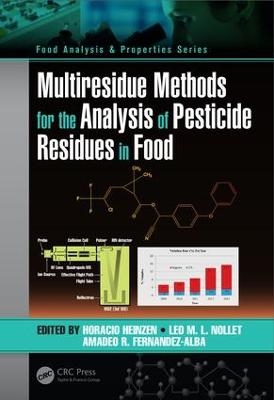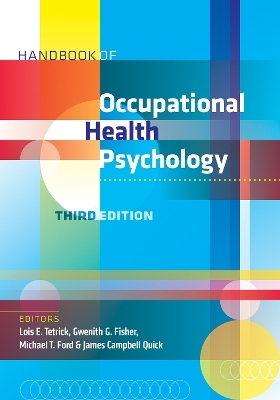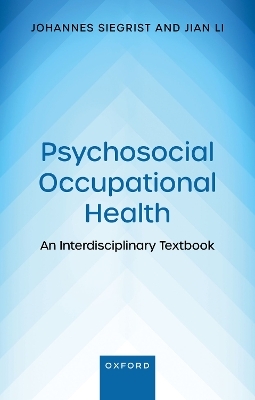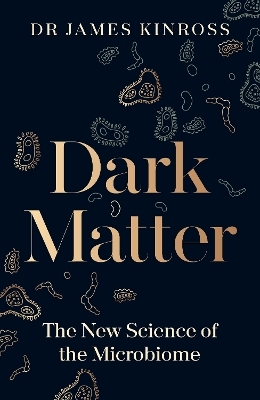
Multiresidue Methods for the Analysis of Pesticide Residues in Food
Crc Press Inc (Verlag)
978-1-4822-3509-8 (ISBN)
Horacio Heinzen is a chemist of pharmacognosy (UdelaR, 1983) and earned his degree of Doctor of Göttingen University, Germany, in 1993. He is professor of pharmacognosy and natural products chemistry faculty, UdelaR, since 1998.His main lines of research are the characterization of new bioactive compounds, the validation of the action of native medicinal plants, and the development of a new herbal. In the analytical area, he turned to the area of analysis of pesticide residues and organic contaminants. In particular, his works focus on the development of new analytical meth-odologies on the preparation of samples for the analysis of trace organic compounds in complex matrices, both food and pharmaceutical raw materials.He is coauthor of more than 70 original papers in scientific magazines. He wrote many book chapters and he was a speaker at numerous conferences, national, regional, and international.He was president of the Latin American Society of Phytochemistry (2005–2008) and he is a member of the International Union of Pure and Applied Chemistry and the Scientific Committee of the Latin American Pesticide Residue Workshop (LAPRW) Subcommittee for Crop Protection. Leo M.L. Nollet received his MS (1973) and PhD (1978) in biology from the Katholieke Universiteit Leuven, Belgium. He is editor and associate editor of numerous books. He edited for M. Dekker, New York—now CRC Press of Taylor & Francis—the first, sec-ond, and third editions of the books entitled Food Analysis by HPLC and Handbook of Food Analysis. The last edition is a two-volume book. He also edited the Handbook of Water Analysis (first, second, and third editions) and Chromatographic Analysis of the Environment, Third Edition (CRC Press).With F. Toldrá, he coedited two books published in 2006 and 2007: Advanced Technologies for Meat Processing (CRC Press) and Advances in Food Diagnostics(Blackwell Publishing—now Wiley). With M. Poschl, he coedited the book Radionuclide Concentrations in Foods and the Environment, also published in 2006 (CRC Press). Dr. Nollet has also coedited with Y. H. Hui and other colleagues several books: Handbook of Food Product Manufacturing (Wiley, 2007), Handbook of Food Science, Technology and Engineering (CRC Press, 2005), Food Biochemistry and Food Processing (first and second editions; Blackwell Publishing—now Wiley—2006 and 2012), and the Handbook of Fruits and Vegetable Flavors (Wiley, 2010). In addition, he edited the Handbook of Meat, Poultry and Seafood Quality, first and second editions (Blackwell Publishing—now Wiley—2007 and 2012).From 2008 to 2011, he published with F. Toldrá five volumes on animal-product-related books, namely, the Handbook of Muscle Foods Analysis, the Handbook of Processed Meats and Poultry Analysis, the Handbook of Seafood and Seafood Products Analysis, the Handbook of Dairy Foods Analysis, and the Handbook of Analysis of Edible Animal By-Products. Also in 2011, with F. Toldrá, he coedited for CRC Press two volumes: Safety Analysis of Foods of Animal Origin and Sensory Analysis of Foods of Animal Origin. In 2012, they both published the Handbook of Analysis of Active Compounds in Functional Foods.In a coedition with Hamir Rathore, the book Handbook of Pesticides: Methods of Pesticides Residues Analysis was marketed in 2009; Pesticides: Evaluation of Environmental Pollution, in 2012; and the Biopesticides Handbook, in 2015.Other finished book projects include Food Allergens: Analysis, Instrumentation, and Methods (with A. van Hengel; CRC Press, 2011) and Analysis of Endocrine Compounds in Food (Wiley-Blackwell, 2011). Dr. Nollet’s recent projects include Proteomics in Foods with F. Toldrá (Springer, 2013) and Transformation Products of Emerging Contaminants in the Environment: Analysis, Processes, Occurrence, Effects and Riskswith D. Lambropoulou (Wiley, 2014). In this series, CRC Food Analysis & Properties, he edited with C. Ruiz-Capillas Flow Injection Analysis of Food Additives (CRC Press, 2015) and Marine Microorganisms: Extraction and Analysis of Bioactive Compounds(CRC Press, 2016). Amadeo R. Fernández-Alba is master in chemistry (University Complutense of Madrid) and professor in the area of analytical chemistry at the University of Almería. He is director/founder of the Group of investigation AGR 159 “Pesticide residues” of the Junta de Andalucía.He is the author of more than 120 articles on analysis of contaminants in food and environment. He is editor of three books on control of residues of pesticides, both leg-islative and technical, and of control of quality. The majority of these works are related with the application of mass spectrometry. He is/was a speaker at numerous conferences and is a participant in more than 50 European and National (Spanish) projects mainly related with the evaluation of contaminants in food and environment. He is co-head of the Community Reference Laboratory for Pesticide Residues in Fruits and Vegetables and member of the European Committee European of Normalisation CEN WG4. He is counselor of the Andalusian service of health of the Junta of Andalusia for the control of food quality.
Regulatory Issues. Regulatory Issues (Sanco Document, Epa, Codex and Eurachem Guidelines). Sample Preparation. Most Common Sample Preparation Methods for Mrm (Mini Luke, Acoet, Mspd). Other Sample Preparation Methods for Mrm (Ase, Spme, Dlle, Scfe, Etc). Quechers Approaches. Analysis. Pesticide Physicochemical Properties and Chromatographic Analysis. Modern Mass Spectrometric Configurations for Pesticide Residue Analysis. Gc-Ms Coupling - Gc/Ms Single Quad - Gc/Ms (Itd) - Gc (Ms/Ms) - Gcxgc (Ms) (Tof). Lc-Ms Coupling - Lc-Ms/Ms Triple Quad, Qtrap, Orbitrap, Q-Tof - Lcxlc (Ms/Ms). Gas Chromatographic Analysis - Conventional Detectors (Ecd, Npd, Fpd) - Selected Applications of Gc-Ms and Gc-Ms/Ms. Liquid Chromatography - Selected Applications of Lc-Ms and Lc- Ms/Ms. Targeted Analysis Vs. Untargeted Analysis. Matrix Effects in Gc and Lc. Mrm for Pesticide Residues in Fruits, Vegetables and Cereals. Mrm for Pesticide Residues in Animal Products. Mrm for Pesticide Residues in the Environment. Data Bases for Pesticide Residue Analysis. Conclusions. Conclusions.
| Erscheinungsdatum | 21.07.2017 |
|---|---|
| Reihe/Serie | Food Analysis & Properties |
| Zusatzinfo | 35 Tables, black and white; 79 Illustrations, black and white |
| Verlagsort | Bosa Roca |
| Sprache | englisch |
| Maße | 178 x 254 mm |
| Gewicht | 952 g |
| Themenwelt | Sachbuch/Ratgeber ► Gesundheit / Leben / Psychologie |
| Medizin / Pharmazie ► Medizinische Fachgebiete ► Arbeits- / Sozial- / Umweltmedizin | |
| Studium ► Querschnittsbereiche ► Klinische Umweltmedizin | |
| Naturwissenschaften ► Biologie | |
| Naturwissenschaften ► Chemie | |
| Technik ► Lebensmitteltechnologie | |
| ISBN-10 | 1-4822-3509-9 / 1482235099 |
| ISBN-13 | 978-1-4822-3509-8 / 9781482235098 |
| Zustand | Neuware |
| Haben Sie eine Frage zum Produkt? |
aus dem Bereich


